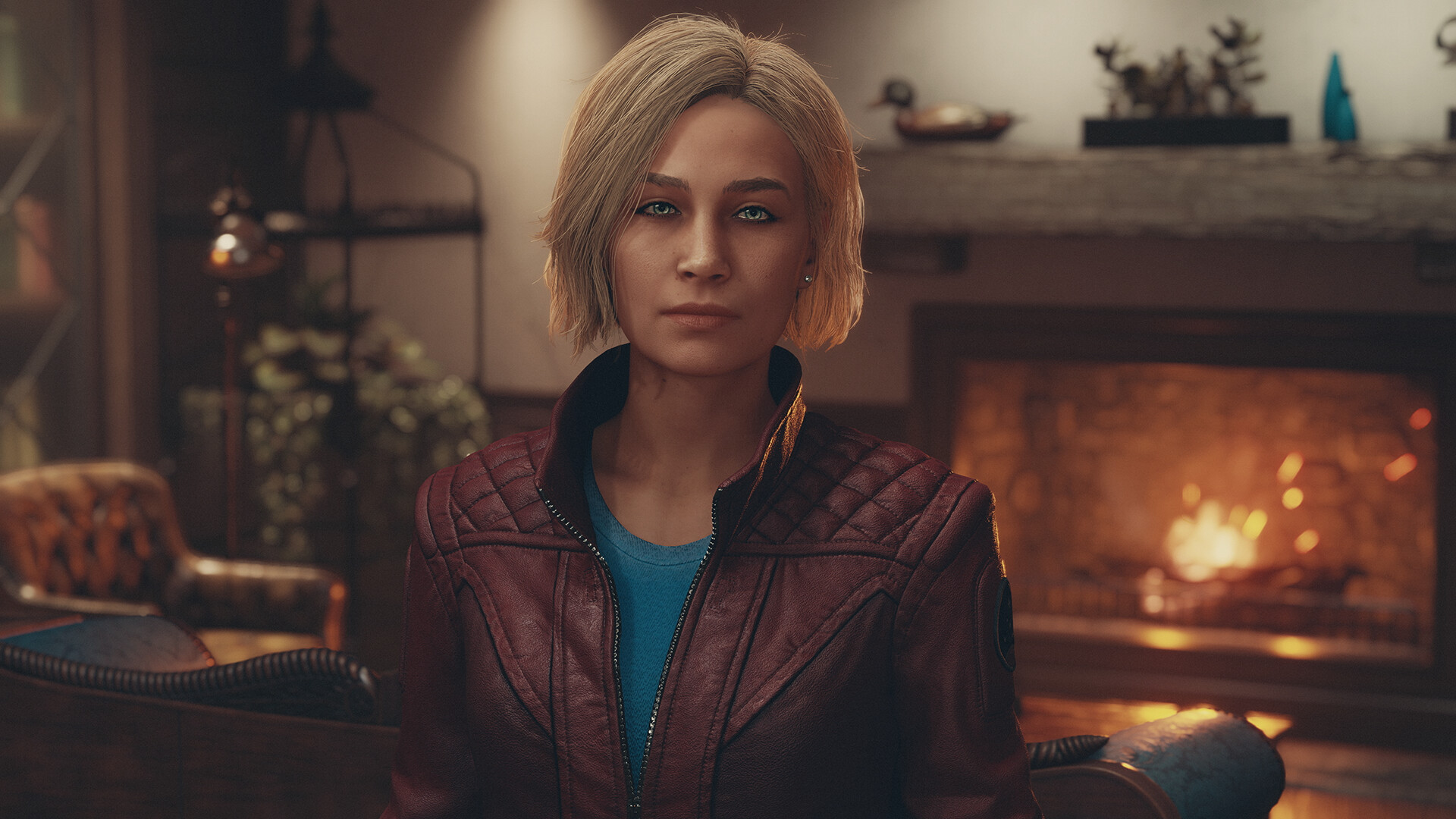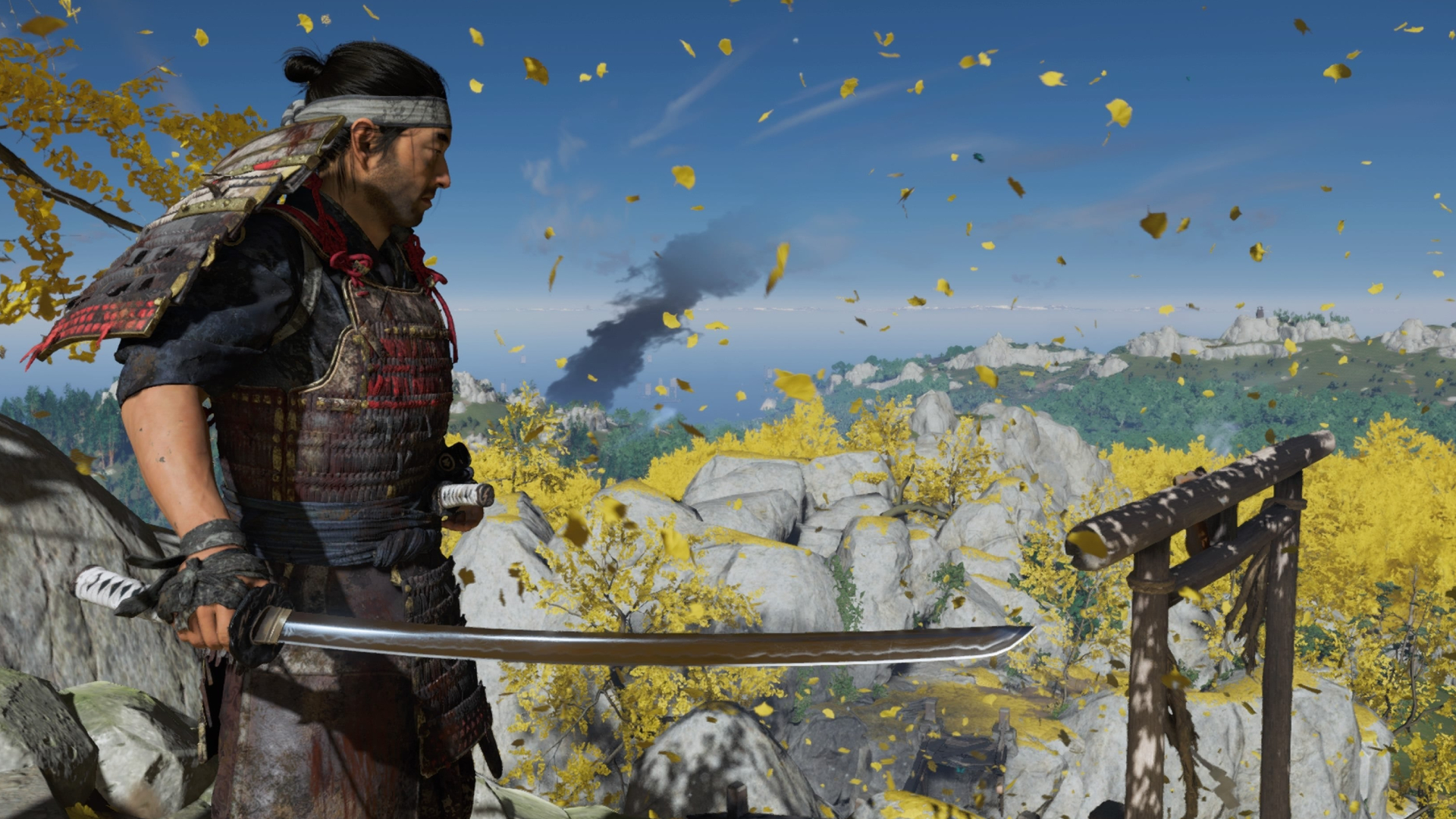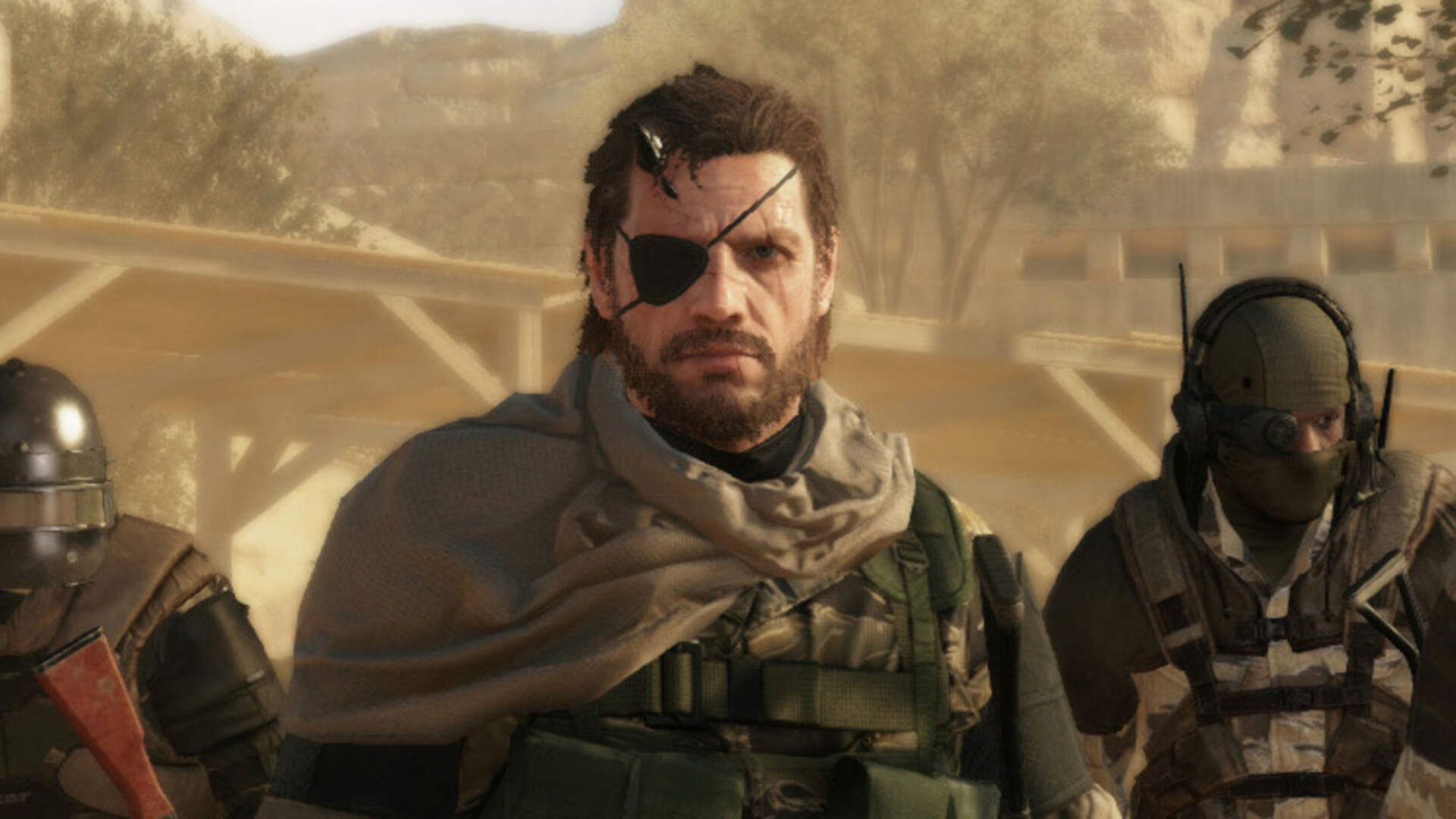From Starfield to Ghost of Tsushima, open-world games struggle to keep their characters consistent
Mixed messages

Open-world games give us breathtaking settings across which to blaze our trails. However, amongst those wide expanses, protagonists and companions alike can sometimes be lost between the cracks.
In a linear game, writers are free to tweak their characters in line with narrative progression, adding nuances and subtleties that can elevate dialogue and interactions to new heights. Take Joel’s journey in The Last of Us Part 1 or Cloud’s development in Final Fantasy 7 Remake - both tell stories of characters who soften as they undertake their respective journeys, meaningfully changing as people over the course of their adventures.
In a non-linear context, this can be a difficult feeling to achieve. Since certain missions in open-world games can be accessed at any time, writers are forced to hedge their bets when crafting dialogue for heroes and companions as they undertake side quests. Ideally, this dialogue must be just as apt in the game’s early stages as it would later on. However, striking this balance often necessitates the use of generic, catch-all dialogue which, by its very nature, has to ignore or underplay any character development that could take place.
Hedging your bets

Starfield's four core companions have a lot to say. Their comments as you take off, land, dock, and make your way through dogfights add a nice sprinkling of humanity to the otherwise cold void of space.
However, these quips and observations change little as the main story progresses. Sam Coe and his daughter will never settle their interminable arguments about books, and Sarah Morgan will remain a stick in the mud, regardless of whether or not you complete their respective companion quests. You’d think that Sarah would learn to loosen up once you help her come to terms with the loss of her old starship crew, but she's just as stolid in hour five as she is in hour 55.
Sarah is just as stolid in hour five as she is in hour 55
The otherwise exceptional Samurai action game Ghost of Tsushima suffers from this issue, too. Despite being one of the best PS5 exclusives of its kind, protagonist Jin Sakai’s moving journey is undermined by generic dialogue during side quests.

Jin’s story takes him from an honorable Samurai to a pragmatic assassin, earning our anti-hero the ire of Lord Shimura, his would-be adopted father. The soaring tale ends with Jin dueling Shimura in single combat but regardless of whether or not you, the player, choose to spare Shimura, Jin is a samurai no more and is exiled from Clan Sakai.
Sign up for breaking news, reviews, opinion, top tech deals, and more.
Despite his exile, characters in the game’s side missions continue to refer to Jin as “Lord Sakai”, as Jin responds with generic, open-ended dialogue - strongly contrasting the moving setpieces and personal struggles we see in the main storyline. During side missions, Jin ceases to become fully rounded, instead, he becomes a voyeur - a window into the story of another, around whom the sidequest is centered. In most of these side quests, Jin follows the quest-giver like a lost puppy, blandly acquiescing to their every whim.
During side missions, Jin ceases to become fully rounded, instead, he becomes a voyeur
Many games are guilty of this conceit. Horizon: Forbidden West, Star Wars Jedi: Survior, and even The Witcher 3 at times all subject their protagonists to this sort of bland storytelling. While the window it affords into the gameworld is valuable, much is sacrificed in terms of characterization and nuance.
Filling in the gaps

There are ways to get around this problem, however, though it does require a level of rigidity that might not be to everyone’s tastes. By gating open-world content behind story milestones, developers have been able to ensure that later quests have dialogue that better reflects the main character’s personal journey.
This is a trick common to many of the best story games, including immersive western shooter Red Dead Redemption 2, where the journey of Arthur Morgan unfolds in stages marked by major story milestones. Though this doesn’t apply to the more minor side content, the majority of the game’s missions are framed within this structure, helping to give Arthur a sense of consistent development. This means that, even should you encounter some more generic dialogue during a minor mission, you are still very much in the wake of Arthur’s most recent emotionally fraught adventure.
You are always in the wake of Arthur’s most recent emotionally fraught adventure
This is, in part, why his eventual falling with Dutch van der Linde, the leader of Arthur’s gang, is so emotionally resonant. Arthur’s resentment of Dutch’s blind egotism eventually comes to a boil. After simmering over the course of sets of missions, with the tensions in each set slightly more palpable than the last until, eventually, Arthur and Dutch’s relationship reaches breaking point. Thanks to this approach, the development of Arthur’s feelings seems all the more organic, and more realistic for it.

Stealth action thriller Metal Gear Solid 5 not only uses a similar technique of story gating, but also has regular subplots unfold back at base so that, even if you’ve just returned from an inconsequential side-mission, you constantly feel tied into the game’s overarching narrative. The most memorable of these, the growth and training of D-Dog from adorable puppy to fully grown hound, was a particular delight and went some way to showing off protagonist Venom Snake’s softer side.
It is possible for open-world titles to preserve character development while also offering a flexible approach to in-game tasks
Metal Gear Solid 5 and Red Dead Redemption 2 show us that it is possible for open-world titles to preserve character development while also offering a flexible approach to in-game tasks. However, it’s clear that this requires a very fine balancing act which, in the case of “gating”, sacrifices some of the openness that might otherwise be on offer.
While you can freely ride to the city of San Denis from the very start of Red Dead Redemption 2, there will be less on offer than if you arrived there organically by following the meandering route of the main story missions. To some, this could be a mark of an open world that isn’t so open - a sacrifice made in the name of meaningful character development and narrative consistency that undermines player freedom. Whether or not this sacrifice is worth it, however, is up to you.
Looking for more immersive titles, try our lists of the best RPGs and the best single-player games.

An editor and freelance journalist, Cat Bussell has been writing about video games for more than four years and, frankly, she’s developed a taste for it. As seen on TechRadar, Technopedia, The Gamer, Wargamer, and SUPERJUMP, Cat’s reviews, features, and guides are lovingly curated for your reading pleasure.
A Cambridge graduate, recovering bartender, and Cloud Strife enjoyer, Cat’s foremost mission is to bring you the best coverage she can, whether that’s through helpful guides, even-handed reviews, or thought-provoking features. She’s interviewed indie darlings, triple-A greats, and legendary voice actors, all to help you get closer to the action. When she’s not writing, Cat can be found sticking her neck into a fresh RPG or running yet another Dungeons & Dragons game.